Recipe Blog SEO: Boost your rankings with best practices
Recipe Blog SEO: Mastering the Differences for Top Rankings In the bustling online landscape, recipe bloggers face a unique set of challenges when seasoning their content for […]
Recipe Blog SEO: Mastering the Differences for Top Rankings
In the bustling online landscape, recipe bloggers face a unique set of challenges when seasoning their content for search engines.
Unlike the generic approach to SEO, a recipe blog demands a specialized mix of ingredients to appeal to both the algorithmic palate of search engines and the diverse tastes of a global audience.
With a focus on user experience, keyword optimization, and delectable content, the transformative power of a tailored SEO strategy cannot be understated for culinary content creators.
To ensure these digital chefs can craft posts that rise to the top of search results, understanding the nuances of SEO for recipe content is as essential as the perfect pinch of salt in a signature dish.
Keep reading to uncover the secrets of harnessing Search Engine Optimization to amplify your flavorful online presence.
Key Takeaways
- LinkGraph Tailors SEO Strategies Specifically for Recipe Blogs to Enhance Search Engine Rankings and User Engagement
- Comprehensive Keyword Research and the Use of Rich Snippets and Structured Data Are Pivotal SEO Elements for Recipe Content Visibility
- Optimizing User Experience Through Responsive Design and Swift Loading Times Is Critical for Recipe Blog Accessibility on Various Devices
- Strategic Internal Linking Within a Recipe Blog Promotes User Navigation and Reinforces Topic Relevance for Search Engines
- Balancing Keyword Integration With Authentic Content Creation Preserves the Uniqueness of Recipe Blogs While Optimizing for Search Engines
Understanding the Unique SEO Needs of Recipe Blogs
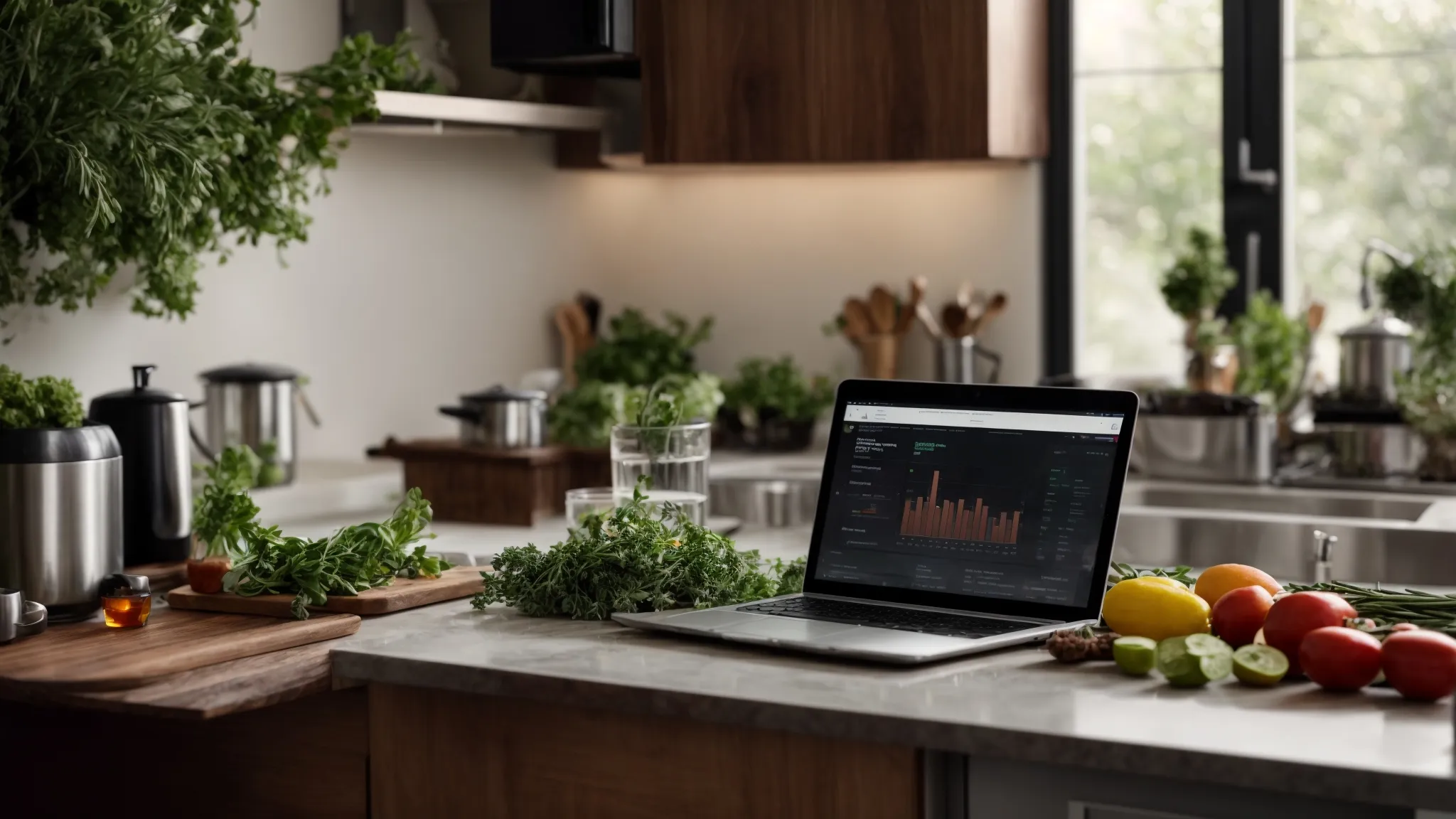
Successful recipe blogs operate at the intersection of passion and precision, where the appetite for delightful dishes meets the rigorous demands of search engine optimization.
A Masterful SEO Strategy for a recipe blog requires a discerning understanding of both general SEO best practices and the specialized tactics that speak to the heart of food blogging.
With a focus on elements like user intent, keyword research specific to cooking, and rich snippet optimization, industry leaders like LinkGraph have honed the art of differentiating between standard blog optimization and the nuanced approach necessary for recipe content.
As such, the pursuit of top search engine rankings for a recipe blog commences with Meticulously Crafted SEO Solutions, fine-tuning each tactic to create a harmonious blend of ingredients that are as palatable to search engines as they are to the eager home cook leafing through pages of savory and sweet discoveries.
Identifying Ingredients of a Successful Recipe Blog SEO Strategy
The foundation of an effective SEO strategy for recipe blogs rests on comprehensive keyword research: it’s about uncovering the search terms that potential readers are using to find new recipes or cooking techniques. LinkGraph’s meticulous approach assesses a blend of broad and long-tail keywords, ensuring that content resonates with the user’s culinary queries and surpasses the competition in search results.
| SEO Element | Importance for Recipe Blogs |
|---|---|
| Keyword Research | Unlocks the specific terms and phrases food enthusiasts search for. |
| Rich Snippets | Enhances the visibility of recipe posts in SERPs through structured data. |
| User Experience | Crucial for engaging and retaining visitors, leading to higher search engine rankings. |
| High-Quality Backlinks | Drives authority and credibility to a recipe blog, signaling relevance to search engines. |
Optimizing a recipe blog necessitates an emphasis on rich snippets and Structured Data: by integrating the right schema, LinkGraph assists recipe bloggers in showcasing their dishes directly in search results, beckoning users with enchanting images, star ratings, and preparation times. This precise targeting piques interest and enhances click-through rates, directly impacting the blog’s search performance and visibility.
Analyzing Differences Between Standard and Recipe Blog SEO Tactics
Approaching SEO for a recipe blog involves a careful calibration of technique, diverging from standard practices to leverage the nuances of culinary content. Where traditional SEO might pivot on a broad range of topics, recipe blog SEO drills down into very specific territory – concentrating on the subtleties of ingredient combinations, cooking methods, and dietary preferences that define a food blogger’s audience.
LinkGraph’s Search Atlas tool plays a pivotal role in distinguishing these nuances, offering a suite of SEO services tailored to elevate recipe blogs. From optimizing meta descriptions that tease taste buds to enriching recipes with SEO-infused alt text, their strategy ensures that each blog post not only answers to the user’s search intent but also satisfies the intricate requirements of search engines.
Crafting Mouthwatering Content for Better Rankings
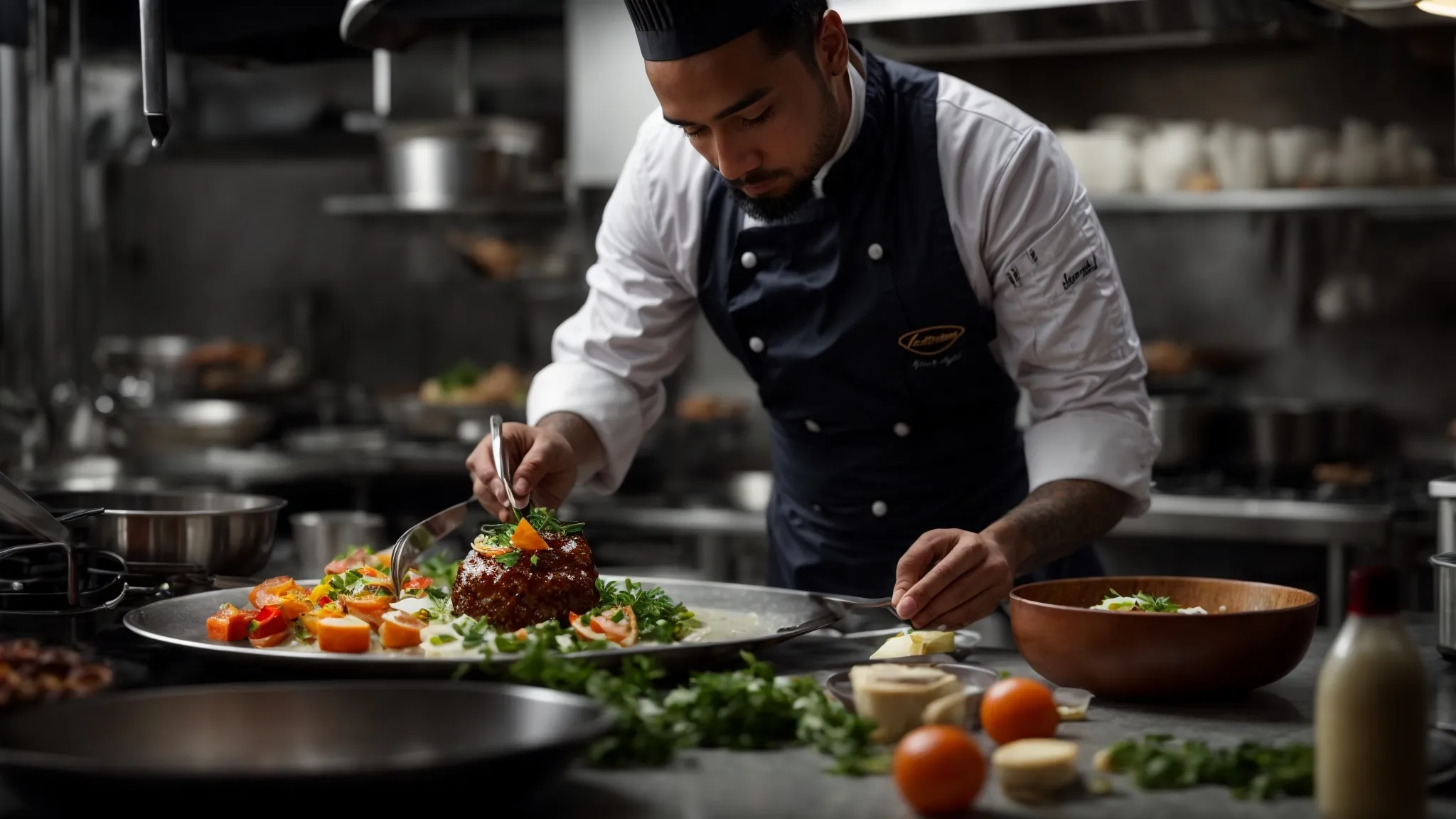
In the realm of recipe blogs, the allure of succulent narratives intertwined with strategic keyword placement is a recipe for success.
As LinkGraph delves into the delicate craft of SEO for food bloggers, their approach serves a dual purpose: enriching the reader’s experience with engaging, thematic content while meticulously integrating SEO best practices.
This equilibrium ensures that each post resonates deeply with the intended audience, bolstering its chance to garnish visibility and ascend the ranks in search engine results.
The journey to top-tier rankings begins with the orchestration of content that is both rich in flavor and optimized for search visibility.
Creating Rich, Flavorful Content to Engage Readers
LinkGraph’s SEO services extend beyond mere technicalities, delving into the essence of what makes recipe content truly resonate with its readers. Their crafted Content Strategy revolves around embedding SEO keywords in the tapestry of flavorsome narratives, ensuring the blog posts are not only informative but also deeply engaging to the gastronome hunting for their next culinary expedition.
Employing evocative language that appeals to the senses, LinkGraph’s approach to content amplifies the blog’s authority and user experience. Each word is selected to arrest the reader’s attention, painting vivid imagery of aromas and tastes while ensuring that the SEO foundation is robust enough to propel the blog post to the summit of search engine results, nurturing a loyal following of readers and home cooks alike.
Balancing Keywords With Appetizing Narratives in Posts
For recipe bloggers aiming to charm both search engines and taste aficionados, the subtle interplay of narrative and keyword optimization is non-negotiable. LinkGraph aligns with food bloggers to weave targeted keywords into their recipe stories, ensuring that the narrative flows naturally while strategically enhancing the blog’s search visibility.
By infusing compelling stories with well-researched keywords, LinkGraph elevates the reader’s engagement without compromising the SEO potency of the blog post. This approach not only captivates the reader with alluring descriptions but also signals relevance to search algorithms, contributing to improved rankings and increased organic traffic.
Serving Up a User Experience That Delights
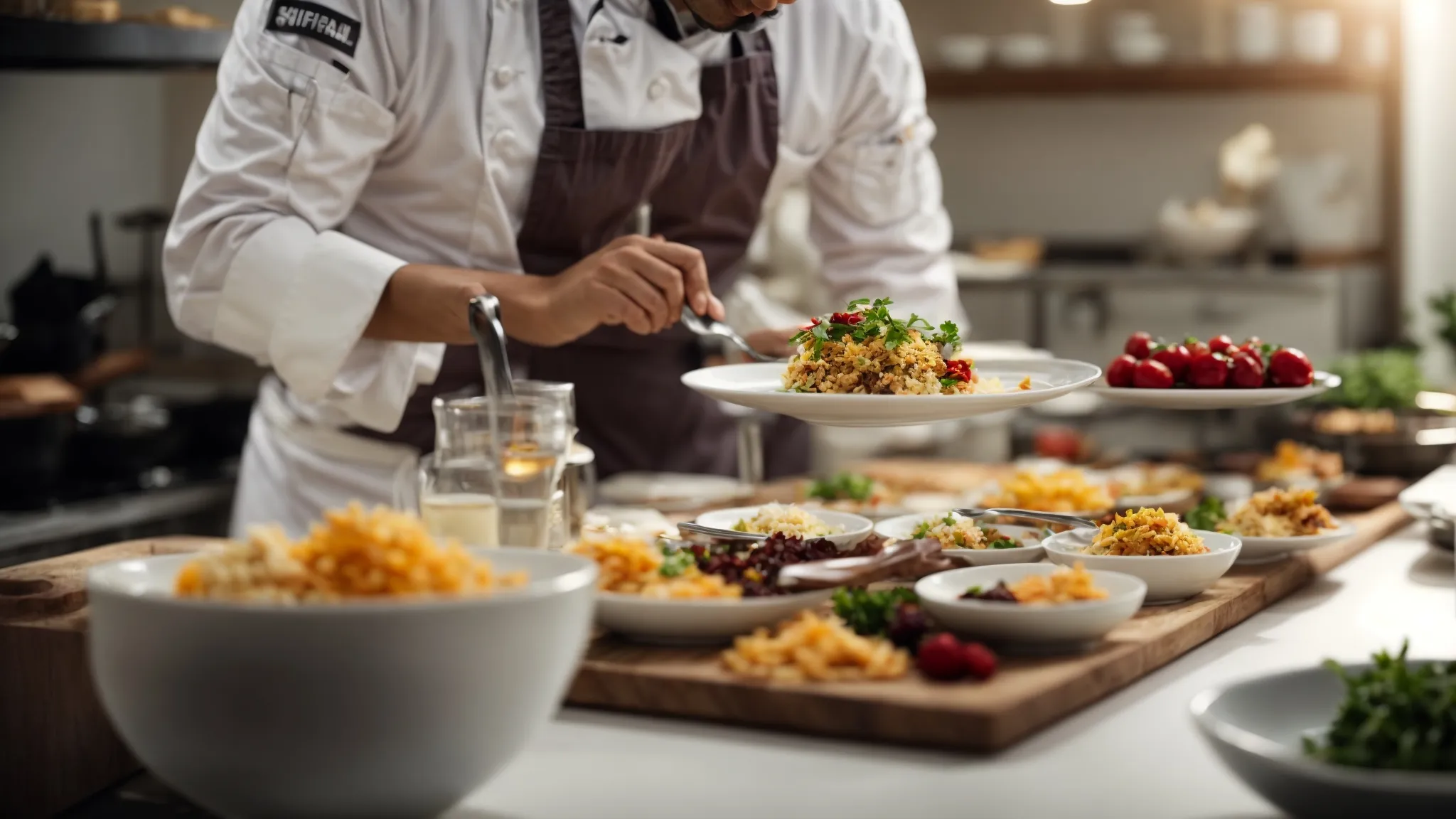
In the digital culinary cosmos, the precedence of user experience is paramount, embodying the gateway through which recipe content and kitchen-ready advice can be readily consumed.
Recognizing this, LinkGraph meticulously engineers the schematic blueprint of a user’s online journey, optimizing each touchpoint to ensure seamless navigation and instantaneous access.
As recipe seekers traverse the boundless library of flavors and techniques, a tailored user experience that operates effortlessly across a multitude of devices stands as a non-negotiable emblem of excellence in catering to the modern cook’s evolving needs.
Streamlining the Browsing Journey for Recipe Seekers
In catering to the dynamic profile of recipe seekers, LinkGraph emphasizes the importance of a streamlined browsing experience. Their approach prioritizes swift loading times, intuitive navigation, and responsive design, ensuring that every visitor to a recipe blog can immerse themselves in culinary content with minimal friction.
The stratagem deployed by LinkGraph entails the orchestration of a user interface that elevates both the aesthetic appeal and functional elegance of a recipe blog. This precision in crafting user pathways promotes prolonged engagement, compelling visitors to explore further, share delectable finds, and return for more gourmet inspiration:
| User Experience Factor | Role in Streamlining Browsing |
|---|---|
| Responsive Design | Ensures accessibility and ease of use across various devices and screen sizes. |
| Loading Speed | Facilitates quick access to recipes, reducing bounce rates and improving satisfaction. |
| Intuitive Navigation | Allows recipe seekers to find desired content effortlessly, enhancing the user journey. |
Enhancing Mobile Responsiveness for Kitchen-Friendly Access
LinkGraph recognizes the significance of mobile responsiveness in an era where recipe blogs are increasingly accessed from the hustle of a busy kitchen or the comfort of a home pantry. Ensuring a recipe blog is mobile-friendly is an intricate part of SEO, enabling quick, pinch-and-zoom-free access to content for the cook on-the-go.
The strategic focus on mobile responsiveness speaks to the modern user’s preference for portability and the integrality of smartphone usage in cooking practices. LinkGraph’s expertise ensures recipe sites are perfectly calibrated for small screens, providing uncluttered displays and swift interactions that keep epicureans engaged and less prone to seek culinary guidance elsewhere:
| Mobile Feature | Influence on Kitchen-Friendly Access |
|---|---|
| Touch-Friendly Interface | Maximizes ease of use for cooks who interact with devices amidst culinary tasks. |
| Clear Readability | Delivers content in a digestible format without the need for constant resizing or scrolling. |
| Speedy Load Times | Keeps the momentum going by providing instant access to recipes and cooking tips. |
Optimizing Recipe Posts for Maximum Flavor and Visibility
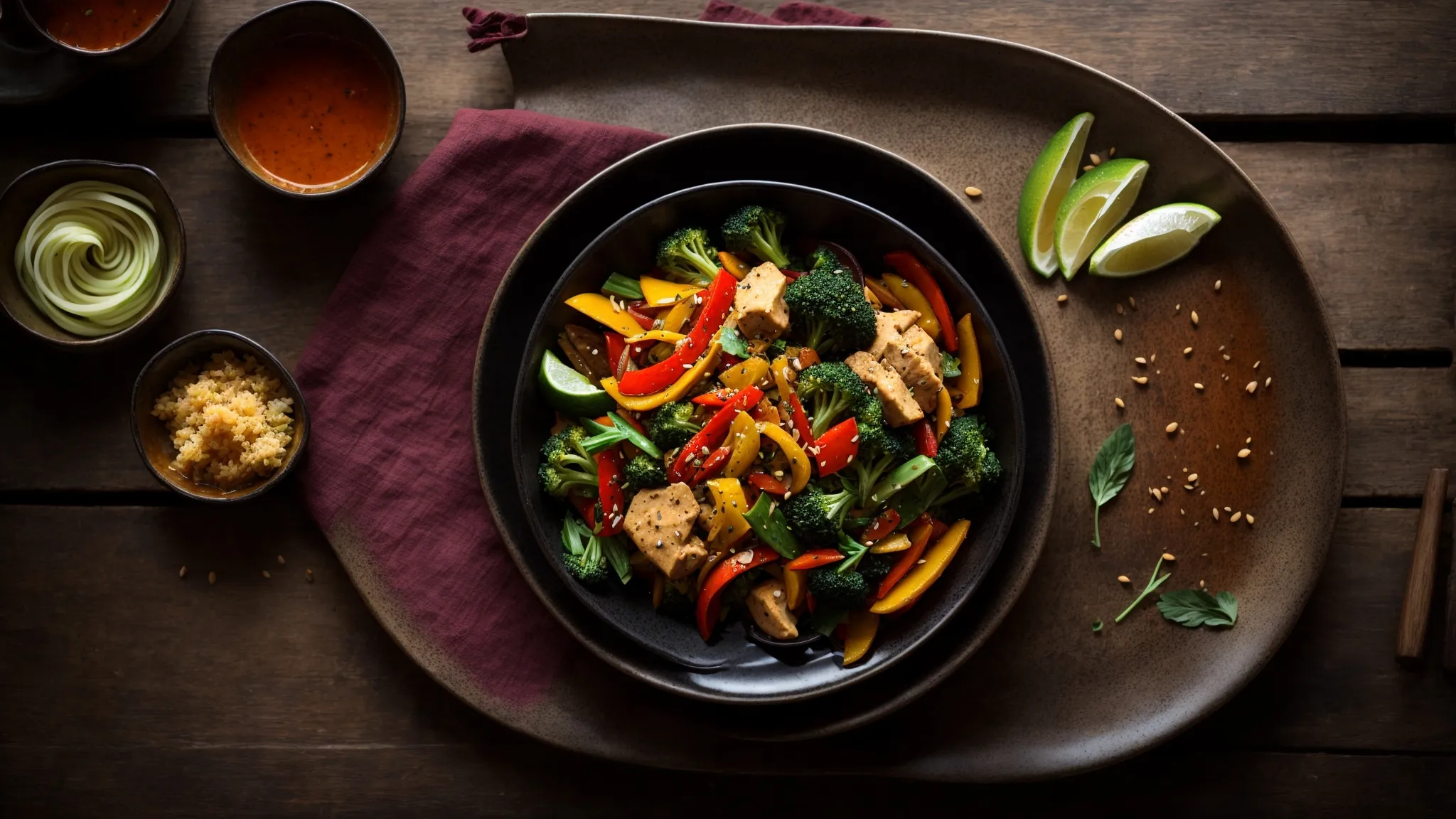
In the competitive space of food blogging, standing out is about more than just crafting delectable recipes; it’s about presenting them in a way that captures both the palate and the prying eye of search algorithms.
While a recipe blogger’s primary goal may be to entice and engage their readers with luscious visuals and mouthwatering descriptions, understanding and implementing SEO tactics is what will propel their culinary creations to the forefront of search results.
Moving beyond the basics, enhancing recipe posts with structured data and SEO-friendly visual tags is a nuanced skill that LinkGraph specializes in, ensuring that every element of a blog is seasoned perfectly to satisfy the ever-growing hunger of the digital world.
Utilizing Structured Data to Make Your Recipes Stand Out
LinkGraph skillfully leverages the power of structured data to elevate recipe content above the crowded marketplace of search results. By implementing schema markup, the tool ensures that search engines can easily digest and display key information such as cooking times, ingredient lists, and user ratings in an eye-catching format.
| Structured Data Element | Benefit to Recipe Blogs |
|---|---|
| Schema Markup | Enables search engines to display detailed recipe information directly in search results, enhancing visibility. |
| User Ratings | Increases credibility and trust, as well as encouraging user interaction and feedback. |
| Cooking Time & Ingredients | Provides essential details at a glance, improving user convenience and recipe practicality. |
Through Search Atlas, LinkGraph’s dedication to structured data extends to the precision of featured snippets, where the goal is not just to rank, but to be the prime selection that immediately answers a searcher’s query: recipe blogs transformed into user-centric, data-rich hubs easily recognized by search engines and beloved by readers for their accuracy and depth.
Incorporating Enticing Visuals With SEO-friendly Tags
LinkGraph champions the inclusion of enticing visuals to captivate recipe blog visitors, while simultaneously ensuring that every image serves an SEO purpose through the strategic use of alt text and file naming. By embedding relevant keywords within these tags, they enhance the discoverability of the visuals in image search results, inviting more users to click through to the delectable content offered.
The firm’s expertise extends to optimizing video content, whereby SEO-friendly tags are instilled within multimedia elements to catch the attention of both users and search engines. This wise synthesis transforms the ordinary recipe post into a sensory feast that ranks well, reinforcing LinkGraph’s commitment to a holistic and visually stimulating SEO approach that captivates both palate and pixel.
Stirring the Pot With Powerful Internal Linking Strategies
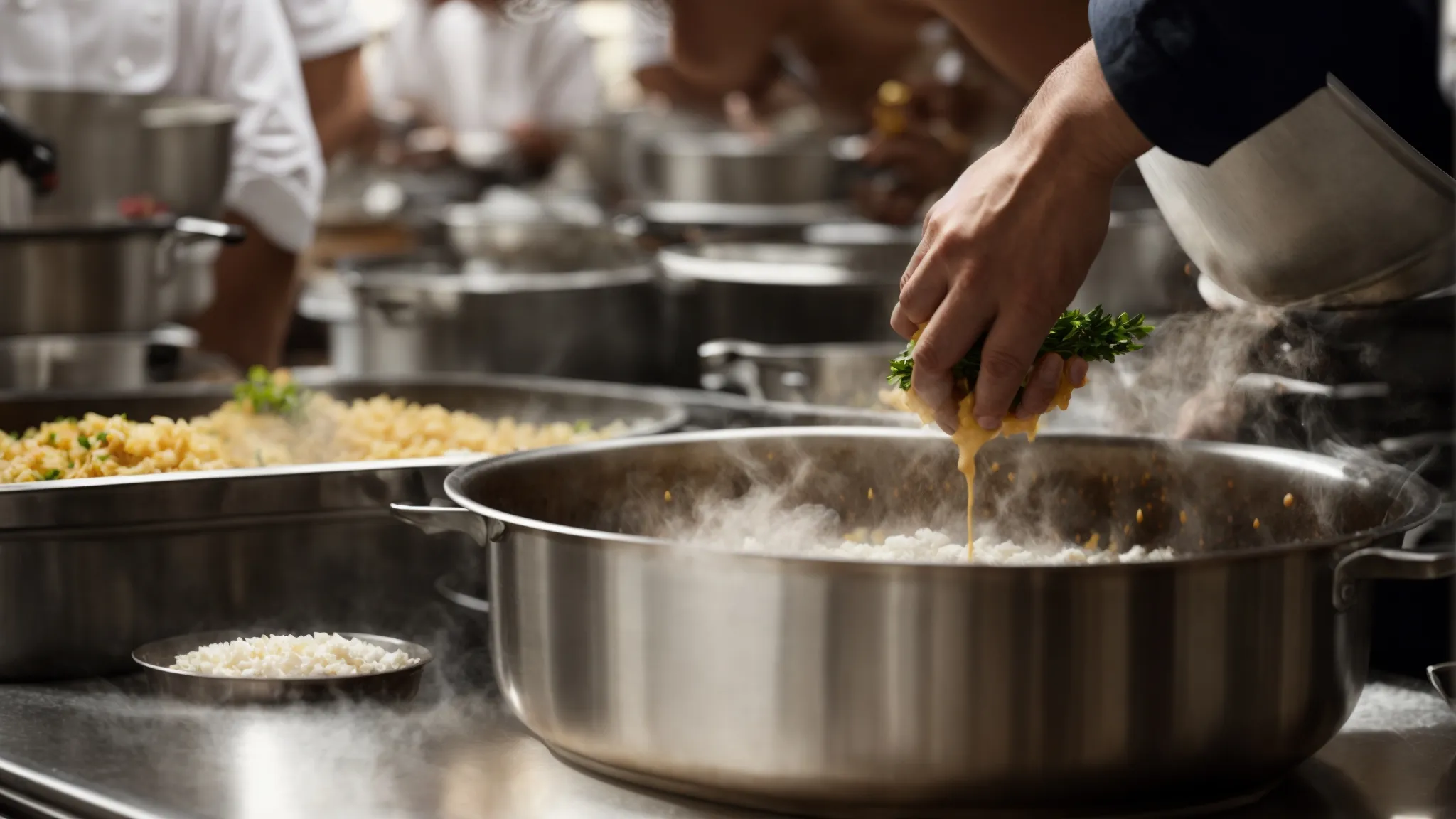
As LinkGraph delves into the intricacies of Search Engine Optimization tailored for food bloggers, particular emphasis is placed on the finely-woven fabric of internal linking strategies.
This advanced technique enriches the user’s culinary adventure, seamlessly guiding them from one delightful recipe to another, thus significantly bolstering the time spent on site.
By interconnecting a network of recipes and cooking tips, readers are effortlessly led on a gastronomic journey through the blog, each click opening up new possibilities and underscoring the SEO finesse that characterizes LinkGraph’s precise approach to optimizing recipe blogs for stellar search engine rankings.
Boosting Time on Site With a Well-Crafted Internal Linking Map
In constructing the virtual architecture of a recipe blog, LinkGraph demonstrates an acute understanding of the weight carried by a well-crafted internal linking map. By strategically connecting individual posts, they curate a culinary tour for visitors, effortlessly extending their time on site as they absorb the rich tapestry of flavors and techniques presented.
LinkGraph’s intricate framework of internal links functions not only as directional signposts but also as conduits of relevance and context within the site’s ecosystem. This reinforcement of topic relevance does more than enhance the user’s navigation; it signals to search engines the pertinence of content, serving to strengthen the blog’s position in the competitive landscape of search rankings.
Connecting Recipes to Enhance the User’s Culinary Adventure
LinkGraph capitalizes on the internal linking of recipes, transforming a solitary blog post into part of a greater narrative that beckons the culinary enthusiast on an enticing journey. A single post about homemade pasta not only satiates a search query but also becomes a portal to complementary content such as the perfect Bolognese sauce or tips for al dente perfection.
| Blog Post Topic | Linked Recipe | User Journey Enhancement |
|---|---|---|
| Homemade Pasta Guide | Bolognese Sauce Recipe | Encourages deeper engagement with the art of Italian cooking. |
| Al Dente Perfection | Pasta Pairings | Invites users to explore and experiment with different combinations. |
This approach, championed by LinkGraph, forges a web of interlinking recipes that not only retains users longer but also creates a comprehensive resource, elevating the blog’s value and relevance in the eyes of search engines: each interlinked recipe becomes a stepping stone, leading the visitor from one culinary delight to the next with unwavering anticipation.
Sprinkling in the Right Amount of Keywords
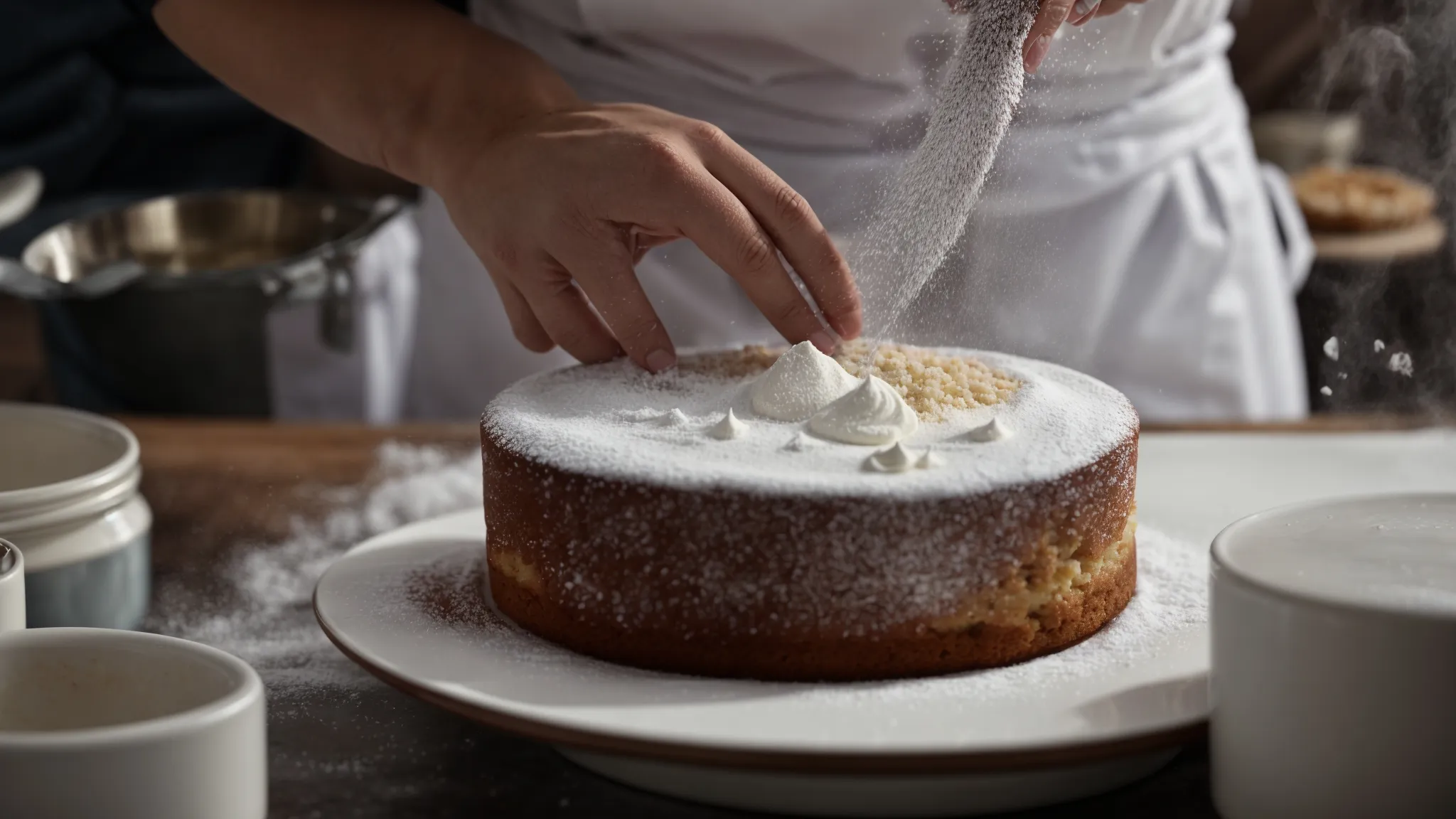
As the digital landscape for food enthusiasts becomes increasingly competitive, the strategic incorporation of keywords within recipe blog content is essential for attaining prominence in search engine rankings.
Savvy recipe bloggers understand that the judicious use of keywords can tantalize both the search algorithms and the culinary curiosity of readers.
A meticulous blend of research for optimal keyword selection and the preservation of a recipe’s genuineness is critical in achieving a flavor-rich online presence that appeals to the discerning palate of both the modern searcher and dedicated epicurean.
LinkGraph, distinguishing itself in the SEO arena, furnishes food bloggers with the expertise to master this delicate balance.
Researching and Selecting Keywords to Spice Up Your Recipe Content
At the heart of an effective SEO strategy, particularly for the unique space occupied by recipe blogs, lies the art of keyword research. LinkGraph’s expertise in this area empowers food bloggers with an array of selections tailored to the specifics of the culinary world, threading the needle between a keyword’s search volume and its relevance to the content, ensuring that every recipe post is perfectly seasoned with the right terms to draw in dedicated readers and casual browsers alike.
LinkGraph’s methodical approach to keyword selection prioritizes specificity and search intent, which fosters a closer connection between the recipe content and its potential audience. Utilizing cutting-edge tools and market analysis, they assist food bloggers in identifying the perfect mix of keywords that will add zest to their posts, optimizing not only for search engine visibility but also for the appetites of searchers hungry for their next kitchen adventure.
Maintaining the Recipe’s Authenticity Amidst SEO Optimization
LinkGraph’s proficiency extends to safeguarding the intrinsic value of the recipe while integrating SEO best practices. Their adeptness ensures that each culinary guide retains its authenticity, thereby forging a genuine connection with food connoisseurs who cherish originality in their gastronomic quests.
At the core of their service, LinkGraph strikes a delicate balance between keyword density and narrative flow, so that SEO implementation does not overshadow the recipe’s essence. The resulting content resonates with both the search engines and the discerning palates of the recipe blog’s audience, maintaining the integrity of the dish’s story.
Frequently Asked Questions
How does SEO differ for recipe blogs compared to other types of blogs?
SEO for recipe blogs hinges uniquely on the presentation and optimization of recipe content, ensuring that elements like recipe cards, structured data for ingredients and cooking instructions, and enticing images with appropriate alt text are finely tuned. These blogs also benefit from a content strategy that maximizes user experience and engagement through visually appealing layouts and attention to user intent, setting them apart from other blog types where text-heavy posts might be the norm.
What are some strategies for creating compelling content that will boost a recipe blog’s search engine rankings?
Creating compelling content for a recipe blog that can surge through search engine rankings involves a strategic approach centered on optimizing SEO elements and user experience. A recipe blogger should prioritize a robust content strategy, incorporating thorough keyword research, to ensure each recipe post caters directly to the user’s search intent and captures the attention of both the audience and search engines.
How can recipe bloggers enhance the user experience on their websites to encourage visitors to stay longer?
Recipe bloggers can significantly enhance the user experience on their sites by integrating a variety of SEO best practices, including optimizing each recipe page with rich, descriptive meta descriptions, enticing SEO titles, and user-focused content that provides value beyond the recipe itself. By focusing on creating a seamless, informative, and engaging user journey, from the initial search result to the well-structured recipe content, bloggers encourage visitors to remain on the site, explore further, and interact with the content through comments and shares.
What are some best practices for optimizing recipe posts to increase their visibility in search results?
Optimizing recipe posts for increased visibility in search results involves implementing best practices such as targeted keyword research to understand user intent, and infusing those keywords naturally into the recipe content, including the title, description, and alt text for images. Additionally, ensuring the website’s technical SEO is in order with a responsive web host, generating a comprehensive sitemap, and utilizing SEO plugins like Yoast SEO to guide content creation processes can greatly enhance a recipe blog’s search engine rankings.
How can internal linking be used effectively to improve a recipe blog’s SEO?
Internal linking can be strategically deployed to bolster a recipe blog’s SEO by weaving a cohesive network that guides visitors through a curated experience, connecting related recipes, tips, and tools, which not only enriches user engagement but also signals to search engines the blog’s valuable content landscape. By thoughtfully placing links in content that lead readers to relevant pages, LinkGraph emphasizes that a blog can achieve lower bounce rates and higher dwell times, both indicators to search engines of a site’s quality, which may improve its search engine rankings.
How does SEO for recipe blogs stand out when compared to other blog types, and what role do elements like recipe cards, structured data, and enticing images with alt text play in capturing the attention of both members and potential customers?
SEO for recipe blogs distinguishes itself by focusing on specific elements such as recipe cards, structured data, and captivating images with alt text. Unlike traditional blog types, recipe SEO is tailored to engage members and attract potential customers, ensuring a unique approach in the digital landscape.
What are some effective strategies, incorporating SEO tips and utilizing SEO tools like SEMrush, that recipe bloggers can employ to craft compelling content and enhance their visibility in Google search results?
Recipe bloggers can leverage SEO tips and tools such as SEMrush to craft compelling content that resonates with their target audience. By conducting SEO keyword research and optimizing page titles, bloggers can enhance their visibility in Google search results, attracting not only hundreds of subscribers but also establishing themselves as performers in the competitive world of recipe writing.
How can internal linking, a crucial SEO ranking factor, be strategically used in recipe blogs to guide members seamlessly through related recipes and contribute to a positive user experience?
Internal linking, a vital SEO ranking factor, plays a significant role in guiding members through related recipes and enhancing the overall user experience on recipe blogs. By strategically placing links with anchor text, bloggers can create a well-connected network that not only retains members but also contributes to improved search engine rankings.
In the realm of SEO SEO and recipe SEO, how does a meticulous blend of SEO keyword research and quality content creation contribute to a recipe blog’s success in captivating both algorithms and subscribers?
A meticulous blend of SEO keyword research and quality content creation is crucial for a recipe blog’s success in the dual world of SEO SEO and recipe SEO. This approach not only appeals to algorithms by optimizing for ranking factors but also captivates subscribers with engaging content. It ensures a harmonious balance that elevates the blog’s visibility in search results and resonates with the preferences of a discerning target audience.
What role does a well-crafted page title play in recipe SEO, and how can it serve as a powerful tool to capture the attention of customers and potential subscribers?
A well-crafted page title is a powerful tool in recipe SEO, serving as a key element to capture the attention of both customers and potential subscribers. It acts as a beacon in Google search results, enticing users with relevant information and compelling them to skip past competitors. By optimizing page titles, recipe bloggers can enhance their online presence and draw in a dedicated audience, turning casual visitors into loyal subscribers.
Conclusion
Mastering the nuances of SEO for recipe blogs is crucial for achieving top search engine rankings and connecting with culinary enthusiasts.
LinkGraph’s specialized approach involves comprehensive keyword selection, optimizing for rich snippets, delivering a seamless user experience, and embedding SEO in enticing, authentic content.
Utilizing structured data, visually appealing, SEO-friendly imagery, and a strategic internal linking system further elevates the visibility and user engagement of a recipe blog.
This intricate, tailored SEO strategy helps recipe blogs stand out in a crowded digital marketplace, ensuring they captivate both algorithms and avid food lovers alike.















































































